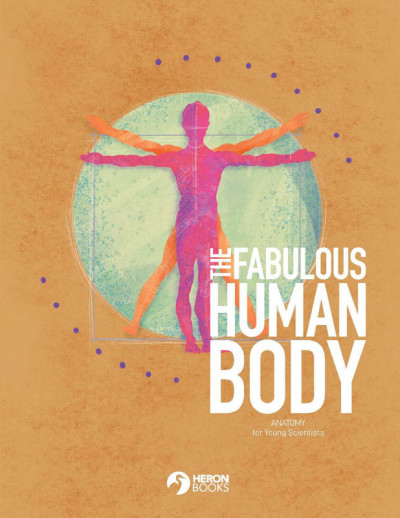We use cookies to make your experience better. To comply with the new e-Privacy directive, we need to ask for your consent to set the cookies. Learn more.
Fabulous Human Body - Anatomy for Young Scientists
Overview of human anatomy from cells, tissues and organs through the following systems: muscular, skeletal, cardiovascular, respiratory, digestive, urinary, and nervous. Systems are explained with age- appropriate language and examples. Set includes the Human Body Cards – a set of 39 glossy, double-sided cards with an illustration on one side and the name and function of the part and its anatomical system on the reverse. Additional materials required include: small bits of food, butcher paper, elementary microscope and slides (or pictures of cells), human skeleton model (or picture), human anatomy model (18”) or photos of body systems, and a stethoscope.
This beautifully illustrated book introduces young students to the fascinating subject of human anatomy. Punctuated with interesting tidbits, this book introduces the main body systems and their parts and functions, using simple, non-technical language. Students learn about cells and how they make up tissues, which make up organs, which make up systems.
The accompanying learning guide includes many hands-on activities, including using colorful anatomy cards to practice recognizing organs and their functions.
Items in this section tend to be instructional frameworks, or unit studies with a "core" teaching resource supplemented with additional text and/or activity resources.
Hands-on and self-pacing, this new science series meets the learning needs of diverse learners. Courses are well-written, engaging, and focus on mastery of information. With the flexible, independent pacing, students should expect to complete each course in 10-17 hours, with an end of unit exam to ensure mastery. Home Study Kits include several components: the softcover Student Text, the Student Learning Guide, and Teacher Resource Packet. Written from a religiously neutral perspective, so no evolution or intelligent design is discussed.
Abundantly illustrated, the textbook is written to the student and provides many hands-on activities. Students will appreciate the well placed spacing of text and graphics. The layout is truly inviting and not visually overwhelming. The Student Learning Guide supports independent learning by giving students the course purpose and basic instructions to follow. Following this brief introduction, the guide provides steps to complete in order. Steps cover chapter readings and activities. After completing each step, lines are provided for students to initial, and on occasion, the teacher/parent also verifies the step is completed, and initials. Activities vary and include drawing and labeling in a science journal, finding related items, discussing with the teacher, and related hands-on activities or experiments. See individual courses for more detail. The Teacher Resource Packet includes the overall publisher philosophy called Swimming Upstream, background information with materials list, the end of unit exam, exam answers, and a Certificate of Achievement. Components are sold in sets called Home Study Kits and are not available individually. Topical Home Study Kits are available individually or in grade level packages that align with the publisher's recommended sequence:
- Take a Closer Look - An Introduction to Microscopes for Young Scientists
- World of Plants - How Plants Live & Grow for Young Scientists
- Let's Find it! - All About Maps and Globes for Young Scientists
- Light Bulbs, Switches and Batteries - Hands-on Electricity for Young Scientists
- Our Amazing Planet - Introduction to Geography for Young Scientists
- The Young Scientist - An Introduction to Observation and Discovery
- The Fabulous Human Body - Anatomy for Young Scientists
- Let's Make Things Go! - All About Engines for Young Scientists
- World of Electricity - Everyday Electricity for Young Scientists
- Circulation of the Blood - The Circulatory System for Young Scientists
- World of Machines - An Introduction to Simple Machines for Young Scientists
| Product Format: | Other |
|---|---|
| Brand: | Heron Books |
| Grades: | 4-6 |
| ISBN: | 9780897392990 |
| Length in Inches: | 11.5 |
| Width in Inches: | 9 |
| Height in Inches: | 1 |
| Weight in Pounds: | 1.65 |

